Strong difference in survival rates of Life Terra planting projects
Case studies of Tiana and Bellprat (Catalonia, Spain)
At Life Terra, we want to be transparent not only in the number of trees planted during the project but also with respect to the success of these reforestations. From the beginning of our project we’re regularly analysing some of the most representative planting sites of a particular region. In this case, in Catalonia, Spain, where we carried out various plantings during our last planting season.
We cannot be 100% sure why some plantings have a higher survival rate than others. But we can analyse some of the factors that might have contributed to the plants’ performance.
The planting in Tiana, a town located east of the Barcelona Province next to the sea, was carried out in March 2022. We placed protectors to protect trees from people and animals (mostly rabbits). It was still cold and wet when we planted the trees but the drought period started early in the region with intense periods of heat during the summer, lasting well into September. In this case, the tree protectors might have contributed to “suffocating” the trees, as this was also a south slope receiving more irradiation from the sun. Furthermore, the soil in Tiana is very sandy with low organic matter and little water retention capacity. All these factors could have reduced the survival rate which in this case was just 2-3%.
Pictures of a dead tree (1) and a general overview of the planting carried out in March (pictures 2 and 3).
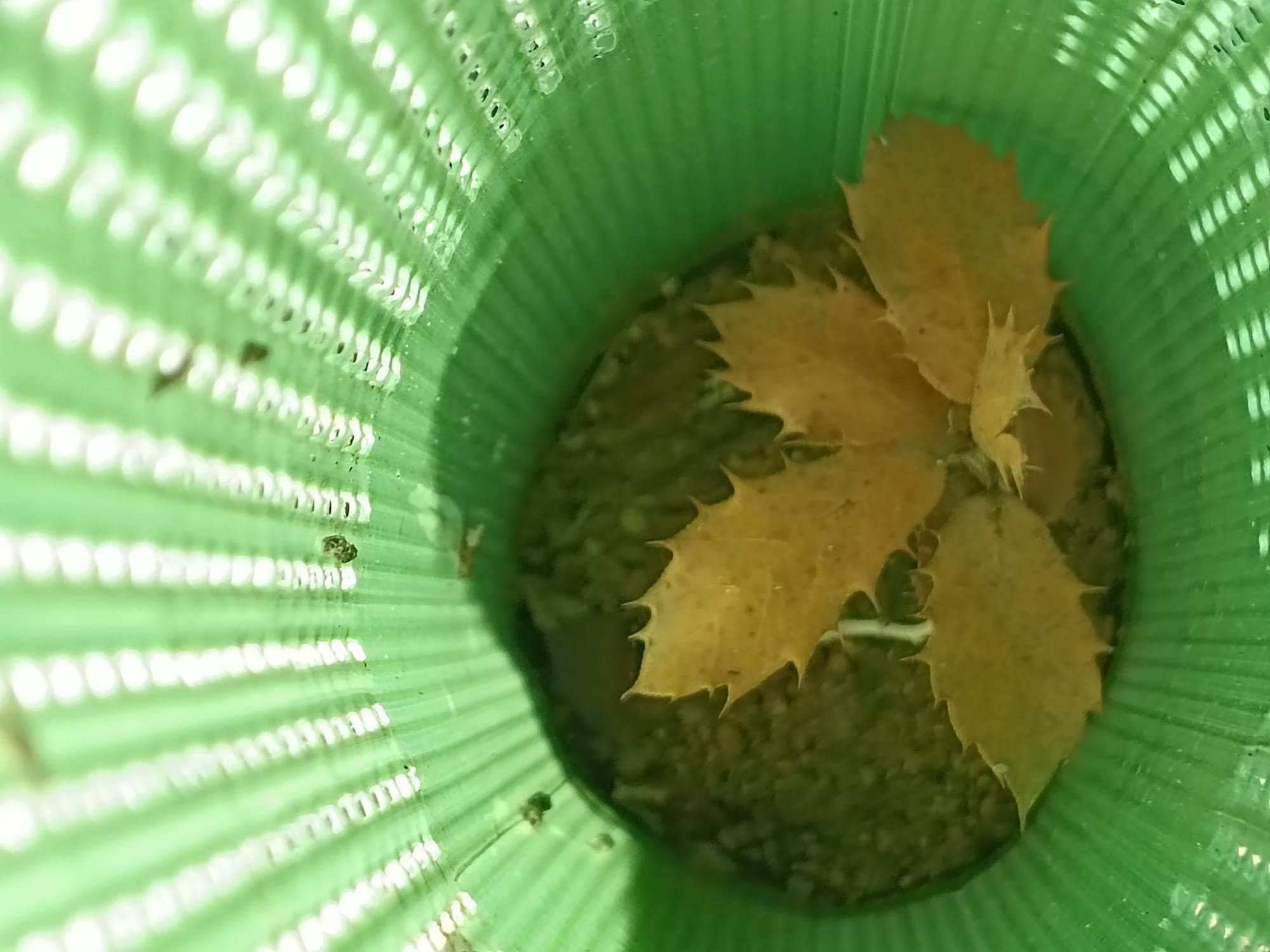
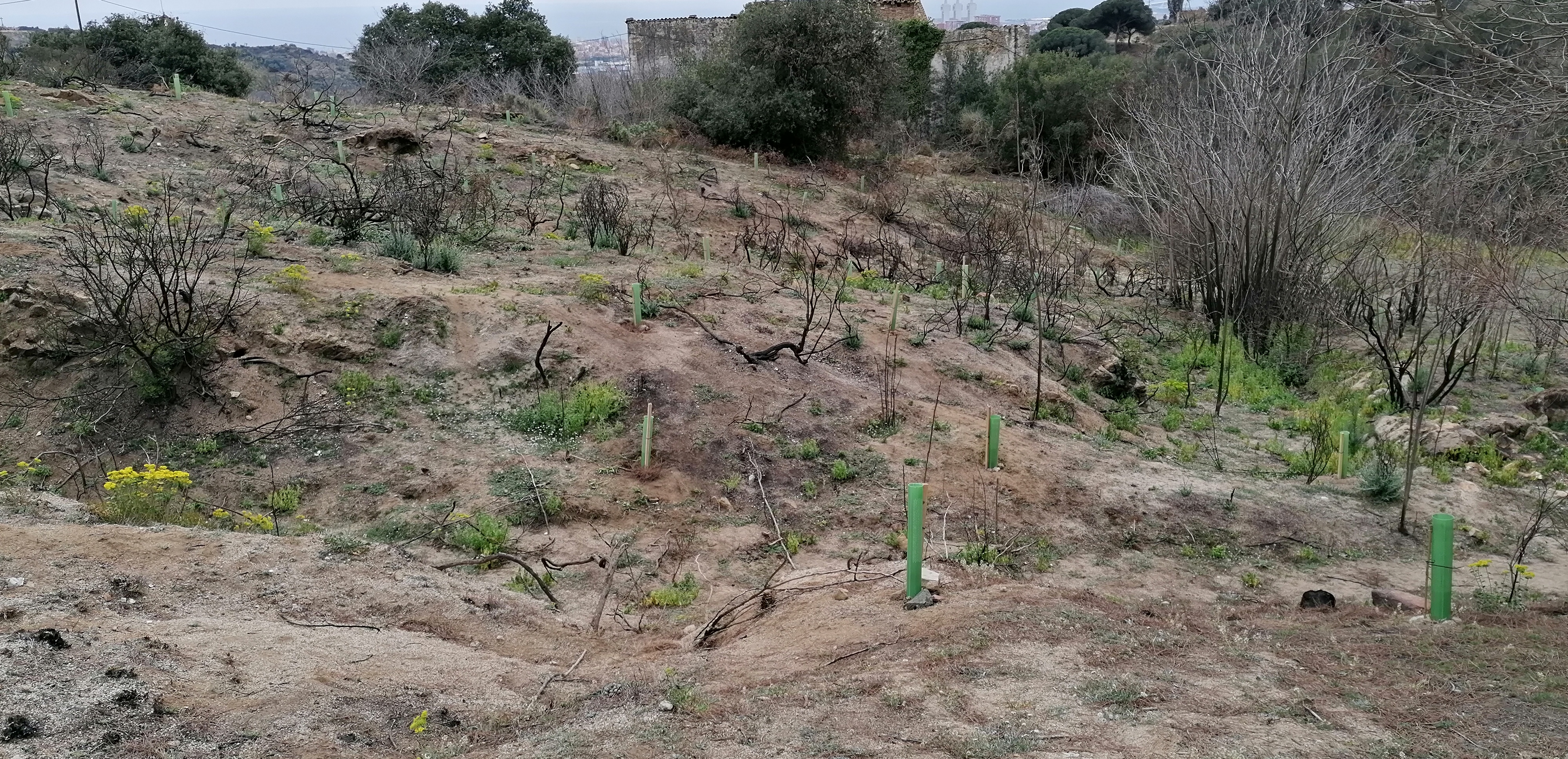
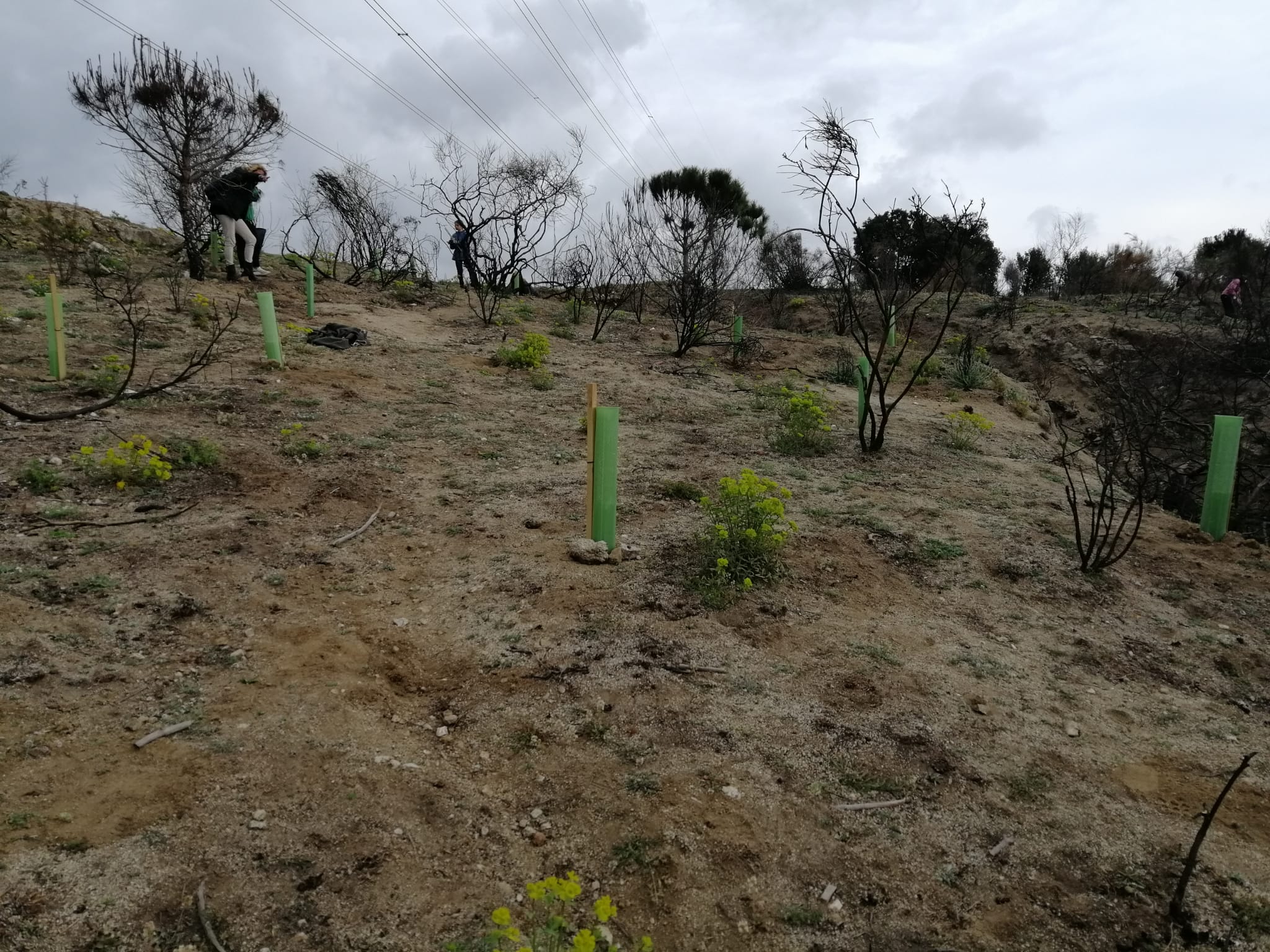
In the same period another planting was done in Bellprat, a village located in the west of the Barcelona Province, further from the Mediterranean sea. The soil has a higher clay component which holds more organic matter and has a higher water retention capacity. Like in Tiana, the area had suffered from a forest fire and was in need of new trees and particularly higher diversity (originally the land was covered with monoculture pine trees -Pinus halepensis-). Some rains at the end of May/June helped the plants, but we believe mostly the soil conditions (clay) were the determining factor for the survival rate to be much higher than in Tiana (in this case over 80%).
You can see how the trees are thriving in Bellprat (pictures 1 and 2), and the planting carried out in March (pictures 3 and 4).
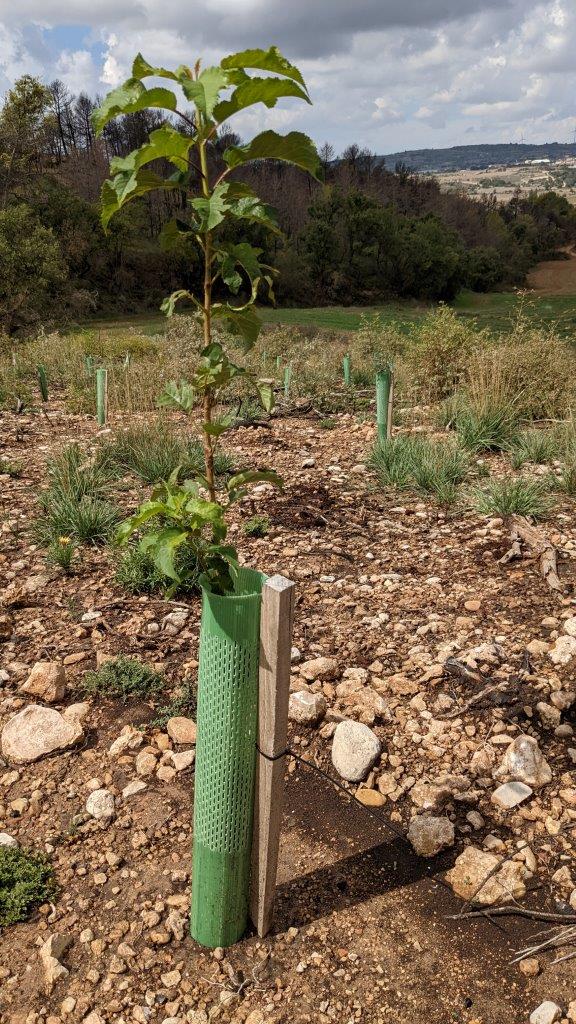
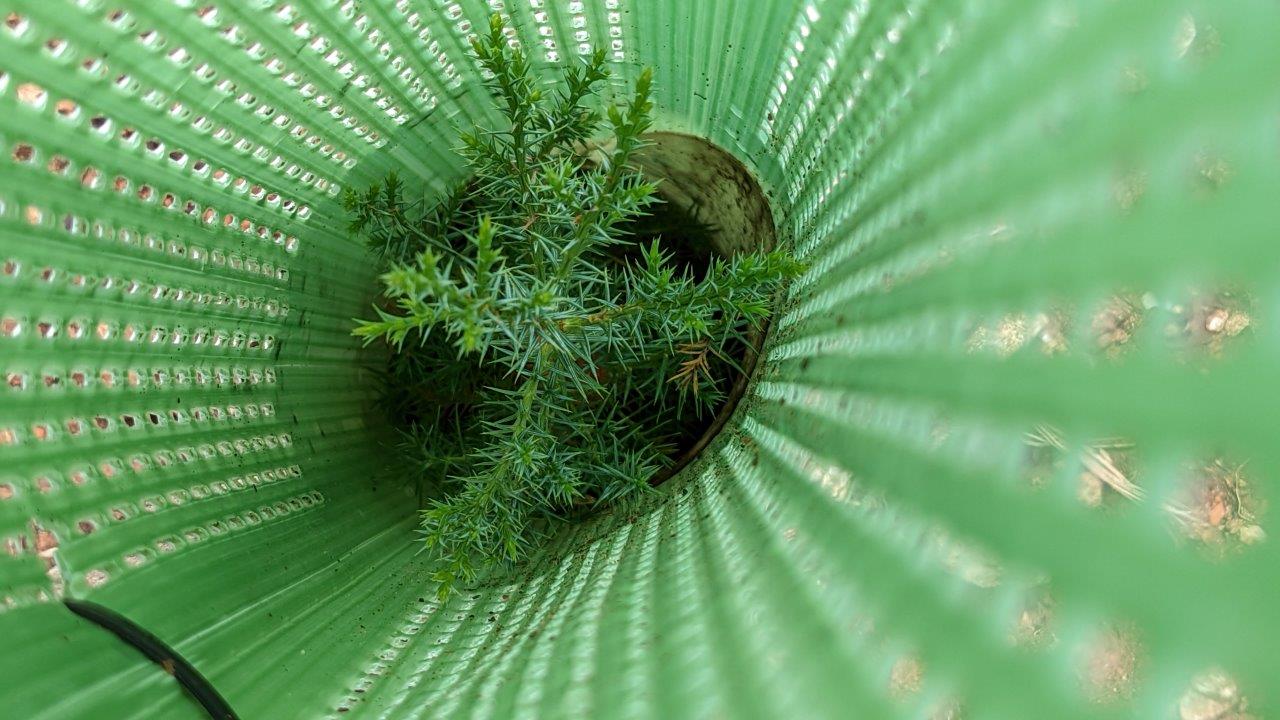


With the analysis of these two cases, we learned that in the case of sandy soils we will need to plant earlier (before the end of a calendar year) to take advantage of the winter rains to give the young trees a better opportunity to get established. Also, adding compost could help to increase survival rates. In the case of Tiana, we are replanting everything in Autumn 2022 with volunteers in order to hopefully get better results this time.